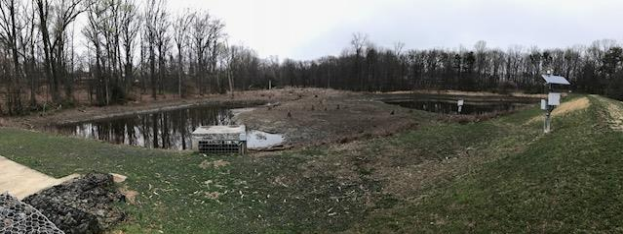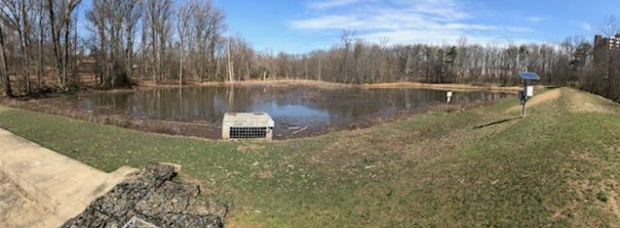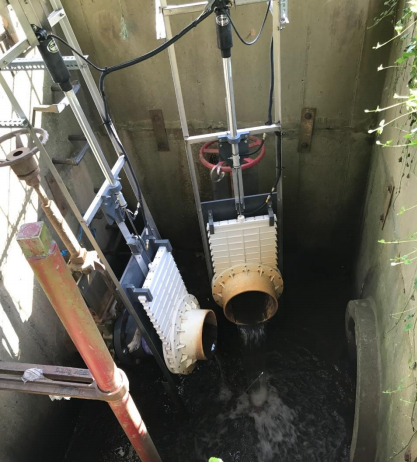Below, Ed Murtagh discusses a pilot project under way to improve the water quality in Sligo Creek — the Stormwater Ponds that were installed just off University Boulevard, near the Sligo Creek headwaters.
Smart Stormwater Ponds June 2017
There is a new pilot project under way to improve the water quality in Sligo Creek. In November 2015, the University Boulevard Stormwater ponds were retrofitted with a Continuous Monitoring and Adaptive Control (CMAC) system. It consists of a control box that receives updates on the weather forecast and information on the depth of the pond, control valves, and a sensor that measures the depth of the water in the pond. The CMAC does the following:
1. Monitors the weather forecast
2. Prepares for incoming runoff into the stormwater ponds
3. Manages stormwater discharge from the stormwater ponds during wet (rainy) weather
4. Meets stormwater retention goals (retaining stormwater in pond for extended periods of time)
5. Manages the discharge to return the ponds to dry-weather levels
The CMAC monitors the weather forecast and also the water level in the ponds and reduces the water level in the stormwater pond if there is rainy weather in the forecast. The system retains stormwater in the ponds much longer traditional stormwater ponds do. Instead of discharging the stormwater runoff immediately, the CMAC retains the runoff for days. This is important since it allows improvement in water quality by allowing more time for the stormwater to either infiltrate into the ground or evaporate into the atmosphere. The CMAC retrofit also allows for increased settling of sediment and nutrient uptake. Excessive sediment and nutrients in streams like Sligo Creek are the main reasons for the decline in water quality. Preliminary water quality data shows a large reduction in Total Suspended Sediment (TSS) and nitrates in the discharge water from the University Boulevard Stormwater Ponds. This project was made possible with major support from the Anacostia Watershed Restoration Partnership and the Maryland Department of Natural Resources, Metropolitan Washington Council of Governments worked with Montgomery County Department of Environmental Protection.
The University Boulevard Stormwater ponds right before rainy weather. Discharge sensor in the middle and the CMAC control box at the right.

Stormwater Ponds days after rainy weather. The stormwater is retained and discharged after the water
quality has improved and the water quantity has been reduced through infiltration and evaporation.

The new control valves that maintain the water levels in the stormwater ponds.



